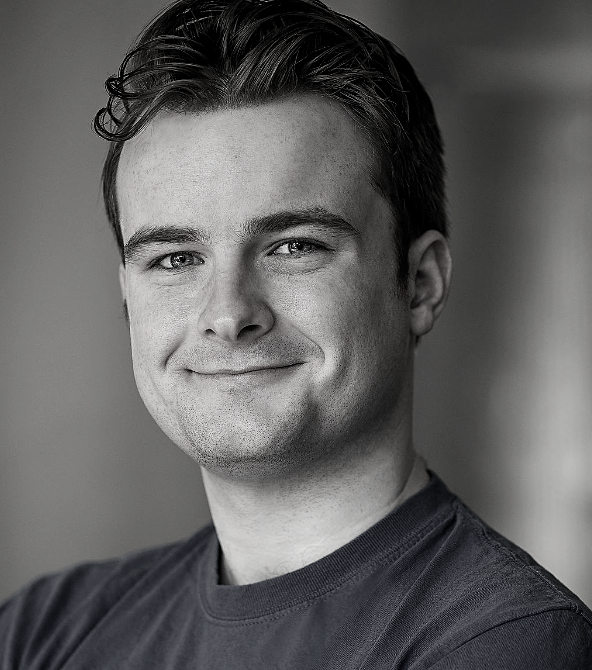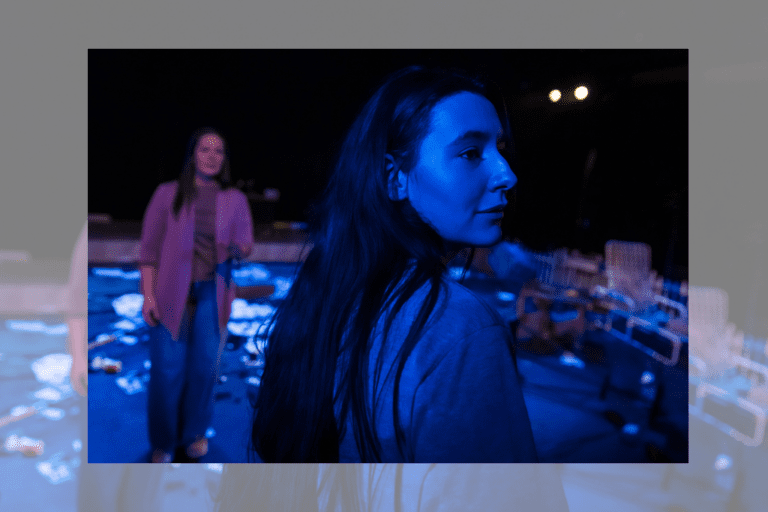REVIEW: The Chinese Lady at Studio 180/fu-GEN Asian Canadian Theatre Company/Crow’s Theatre
A Cantonese land acknowledgment kicks off Studio 180 Theatre and fu-GEN Asian Canadian Theatre Company’s production of American playwright Lloyd Suh’s The Chinese Lady at Crow’s Theatre. An English translation soon follows. It’s a fitting start to a play that goes on to explore the thorniness of translation — of Cantonese into English, yes, but also of objective historical events into subjectively performed narratives.
Like Canadian Stage’s recent Fairview, The Chinese Lady is a play about the white gaze. But it’s one that’s careful to centre the subject of the gaze and her navigation of the damage it inflicts. In this case, that subject is Afong Moy (Rosie Simon), purportedly the first Chinese woman to enter the United States. Riffing on a few historical facts, Suh unspools the story of how, after arriving in 1834 at the age of 14, Moy was exhibited as “The Chinese Lady” in museums around America for decades. In a sharp production directed by Marjorie Chan 陳以珏, the play resonates as a moving character study subtly laced with cautionary reminders of the distance between performance and truth.
The show’s primary mode is direct address. With the help of cheeky companion Atung (John Ng 伍健琪), Moy goes through the motions of her exhibition performance: she walks in a circle, displays her feet, eats shrimp with chopsticks, and drinks tea. The audience ostensibly plays the part of American attendees who have paid the entrance fee — 25 cents for adults, 10 cents for children — to see Moy. And yet it soon becomes clear from the openness with which Moy and Atung share their private thoughts that their performance is significantly different from the one they would have given 19th-century audiences.
Moy accounts for this difference by explaining that the fluent English she’s speaking is more like a translation of the thoughts she was having in her native Cantonese at the time. She knew a little English then, but not enough to “convey the poetry” of her feelings. So The Chinese Lady is a chance for her to share that poetry. But even then, Atung warns the audience, a re-creation is never quite the same as the original.
These concerns over the imprecision of translation lurk in the background until a gripping scene in which Moy and Atung reenact meeting then-president Andrew Jackson. Moy plays herself, while Atung plays both Jackson and himself. When playing himself, Atung acts as Cantonese-English translator for Moy and Jackson’s conversation. Yet the whole reenactment is in English, meaning it is ultimately a translation of a reenactment of a translation. The headspinning complexity of all these layers encourages the audience to consider the distance between what they see on stage in The Chinese Lady and Moy’s actual life.
Simon’s Moy is at first relentlessly upbeat. She is clearly trying to make the best of her situation, and executes the simple choreography the exhibition demands of her with a bright alacrity. But as the play progresses and years begin to pass, she gradually drops the facade of performance and unveils her inner pain through a looser, more liberated physicality.
To Moy, Ng’s Atung remains consistent from year to year. When she’s around, he always delivers the same deadpan humour with the same slyness, prompting Moy to think him “irrelevant” and claim he never has strong opinions. But, in a couple key moments of confession, he lets the audience in on his heart’s true desires and eventually emerges as somewhat queer-coded.
Echo Zhou 周芷會’s set is simple but evocative. She forgoes the lavish curtain implied by the script, instead demarcating Moy’s exhibition space with a slightly elevated square platform in the middle of the room (Crow’s Theatre’s Studio Theatre, configured width-wise). On the platform, there are detailed set dressings like a small gong and a patterned carpet. Off it, a chaotic layout of wooden stools in different configurations extends in either direction. The difference between these two spaces parallels Moy’s experience of America: she’s spent a great deal of time on the exhibition stage, so its every detail is fully realized, while the outside world she’s seen little of is an abstract, carnaged landscape. Zhou and Chan’s previous collaboration, The Year of the Cello, was also a two-hander, and used the Theatre Passe Muraille backspace’s high-up balcony to dramatize yearning by creating extreme vertical distance between the two actors. The Chinese Lady’s platform is only a few inches off the ground, but Chan finds similar significance in height: for most of the show, the platform is Moy’s realm, so when she leaves it or Atung enters it, the shift in dynamic is startling.
Kimberly Purtell’s lighting design and Gloria Mok 莫嘉詠’s sound design largely blend into the background, elegantly supporting the action. But in a couple of moving fantasy sequences, both charge forward dynamically: the warm tones that Purtell uses throughout most of the show shift to icy cools, and Mok supplies an atmospheric, ethereal hum. Since the design is otherwise fairly restrained, these moments hit with serious oomph.
Laura Collins Hughes noted in her New York Times review of the 2022 Public Theater production of The Chinese Lady that at the show’s end “projections… start[ed] flashing historical headlines and illustrations, then news coverage of contemporary anti-Asian attacks.” Chan does not underline the play’s relevance in such bold ink — instead, she smartly finds a way to let Moy’s story speak for itself. And since the production makes her story theatrically compelling, and translation makes our hearing of the story possible, the show reminds us of the beauty of translation. But it never lets us forget the violence of translation, either: The Chinese Lady, and this review of it, can only get so close to the truth.
The Chinese Lady runs at Crow’s Theatre May 2–21, 2023.















Comments